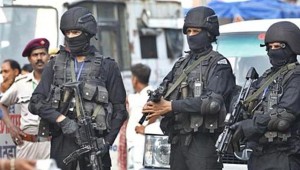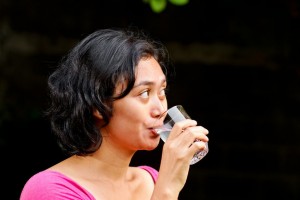
The national capital was on Sunday put on high alert with security being stepped up at prominent buildings and markets after the Delhi Police received inputs about a potential terror strike in the city by 10 suspected LeT and JeM militants who are learnt to have entered India through Gujarat.
The police heightened their vigil at malls, hospitals, schools and colleges in the city, PTI quoted an official source as saying.
He said the input specifically mentioned 10 militants of the Lashkar-e-Taiba and Jaish-e-Mohammed outfits having entered India via Gujarat and that they could carry out a terror strike in Delhi.
The government rushed National Security Guard (NSG) commandos to Gujarat and cancelled a cultural festival at the Somnath Temple where millions of pilgrims were to show up following intelligence reports claiming militants sneaked into the state from Pakistan.
The special cell and crime branch of the Delhi Police have been briefed about the input separately, so that activities of gangs operating in and around the city and elements with suspected terror links can be monitored.
The police are also ensuring that CCTV cameras at all places with high footfall, like popular markets in the city and metro stations are functional. Patrolling across the city has been intensified, the source added.
The government tightened security, especially in the Kutch district that shares land and sea borders with Pakistan, and sounded a high alert after intelligence inputs indicated half a dozen extremists may have entered the state to carry out attacks. No militants have been traced so far, sources said.
“All necessary measures have been taken, there is nothing to worry,” Gujarat chief minister Anandiben Patel told news agency ANI.
Read: Gujarat on high alert after 5 abandoned boats found in last 3 months
The inputs came after a Border Security Force patrolling team recovered an abandoned boat – allegedly from Pakistan — off Koteshwar coast in Kutch on Friday. This was the fifth such incident in the past three months.
But a senior security official in Delhi said the recovery of the boat and intelligence inputs about the alleged infiltration were not connected.
“A task force of NSG reached Ahmedabad at 2am in the morning to deal with any possible terror threat,” said a senior NSG official.
Sources indicated Pakistani national security adviser Naseer Khan Janjua shared the intelligence inputs with his Indian counterpart, Ajit Doval.
Pakistani officials expressed hope that the move would help improve the security situation between the two countries that deteriorated after a militant attack on the Pathankot air base earlier this year.
“We hope that the Indian authorities are able to reciprocate this,” Pakistani interior minister Chaudhry Nisar Ali Khan told journalists, adding Pakistan was serious about countering terrorism and improving cooperation with India.
The Indian security establishment refused to confirm any such development.
Gujarat’s long coastline renders it vulnerable to infiltration from the sea route – the land border with Pakistan is fenced. The terror alert brings back memories of the 2008 attacks in Mumbai, where 10 extremists reached India’s financial capital on a boat from Pakistan and launched strikes that killed 166 people.
Gujarat director general of police, PC Thakur, said three NSG teams were kept on standby in Ahmedabad while one was deployed at the Somnath Temple, where millions of pilgrims were expected to arrive on Monday to mark Maha Shivratri.
A two-day-long cultural programme on the temple premises was also cancelled.
The abandoned boat in question is 20 feet long and 10 feet wide. Some ration, water jugs, fishing nets, crabs, diesel and mattresses were found on board the abandoned boat.
“Nothing suspicious so far has been revealed in the investigation in connection with abandoned boat found from Kutch,” Thakur said.
Security at other religious places such as Dwarka temple, Akashardham and important installations such as power plants, defence bases and the Sardar Sarovar Dam was bolstered.
“State has been put on high alert. The Centre has sent NSG teams following our request,” state home minister Rajnikant Patel said.
Authorities stepped up patrolling at inter-state borders with Rajasthan, Madhya Pradesh and Maharashtra. Police carried out combing operations at hotels and guest houses and scaled up security cover at malls, cinema halls and bus stands.
“Security arrangements at all important installations across state have been beefed up after national security adviser Ajit Doval wrote to Gujarat in this regard,’’ said a top official as security forces were called back from leave.
Gujarat additional chief secretary (Home) PK Taneja held a meeting on Saturday with heads of all three wings of the defence, police and IB chiefs as well as head of paramilitary forces.
“Entire Gujarat Police with pro-active assistance of the centre are on the job. we request the people to not panic,” said Thakur.
With inputs from agencies
